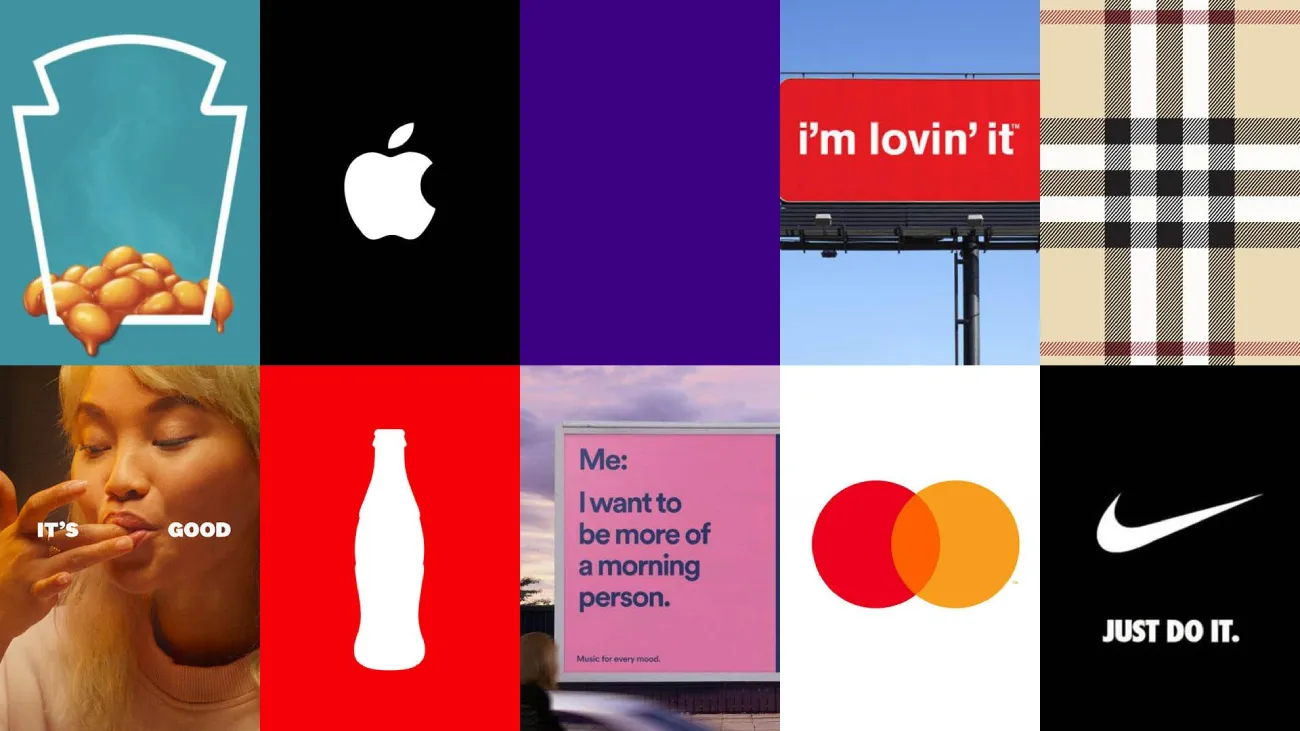Ethos Blog
LEARN HOW TO grow AN iconic brand
Thank you! Your submission has been received!
Oops! Something went wrong while submitting the form.
.jpg)
What Is the Purpose of a Brand Audit? Why It Matters in 2025
According to Forbes, consistent brand presentation can increase revenue by up to 23%. But as your brand grows, spreads across channels, and reaches more people, consistency often slips. Visuals drift. Messaging changes. And suddenly, your brand no longer feels like you.
%20(1).webp)
How to Audit Your Brand in 2025 – A Step-by-Step Guide
Did you know that around 90 % of consumers expect a consistent brand experience, whether they’re on your site, social, or in-store?That’s a high expectation. And as brands expand across channels, platforms, and teams, keeping everything aligned gets more complicated than it looks.
%20(2).jpg)
What is the First Step in a Brand Audit? Start With This Crucial Move
Do you know that only 60% of marketers say their brand is well-aligned with their company’s long-term goals? That leaves a considerable margin for misalignment, one that can quietly impact everything from customer perception to campaign performance.A brand audit is the tool that brings those misalignments to light.

Ethos Plugin for Figma: Enhance Design Consistency
According to a 2024 InVision report, 83% of design teams cite brand consistency as their biggest challenge when scaling across multiple platforms and collaborators. As teams scale and projects span regions, clients, and campaigns, things can start to slip. Fonts go off-brand.
.jpg)
What is Brand Automation?
According to a 2024 Gartner report, 76% of CMOs believe that automating brand-related workflows is critical to delivering consistent customer experiences at scale. In an era where content never sleeps and brand assets are used across dozens of platforms, regions, and campaigns simultaneously
.jpg)
Is a Logo Considered a Brand Asset?
A study by Siegel+Gale revealed that simple, well-designed logos can increase brand recognition by up to 80%, demonstrating that a single visual element can carry significant brand weight. In today’s fast-moving, image-driven world, where people scroll quickly and remember little
.jpg)
Why Agencies Need Brand Asset Management
Did you know the average creative pro spends almost a full day each week just looking for the “right” file? A 2024 Forrester pulse survey put it at 7.2 hours lost per person, per week—time that could be spent creating something fresh or logging billable hours.
.jpg)
How to Build Brand Trust?
In today’s online world, trust is everything. People don’t just buy things because they look nice or sound cool. They buy from brands they believe in. But how to build brand trust in a space where attention is short and options are endless? It starts with being clear, consistent, and genuine in everything your brand says and does

5 C’s of Branding: Build a Strong Brand Identity
Have you ever heard that it takes only 0.05 seconds for someone to judge your brand online? Yeah, blink-and-it’s-done type of first impression. In a world where people scroll faster than they breathe, your brand doesn’t just need to look good—it needs to mean something. That’s where the 5 C’s of branding step in, and no, they’re not just fancy terms marketers throw around to sound clever.

What Are Brand Standards and Why They Matter Most
Imagine if Nike suddenly used Comic Sans on a sneaker ad. Or if Netflix started tweeting like a random meme page. Cringe, right? That’s what happens when brands don’t follow a standard, and yes, it’s a thing.

Why Your Brand Is One of Your Most Valuable Assets
Here’s a wild stat for you—brands make up over 50% of a company’s value in some industries. Yep, not the tech, not the inventory, not the office beanbags. The brand. That little logo, the tone of voice, the vibe... It’s lowkey the most powerful thing you’ve got. You might think a brand is just how your website looks or how cool your Instagram grid is. But nope.

Why Brand Asset Management Matters Today in 2025
Ever send your logo to five different people and somehow get five different versions back? That right there is why you need Brand Asset Management.According to a Lucidpress study, brands that stay consistent see up to 33% more revenue than those that don’t. Mind blown? It should be because brand chaos doesn’t just mess with your vibe, it messes with your bottom line too.

Choosing the Right Colors for Your Brand in 2025
Colors aren’t just for decorating. They can evoke specific emotions as well. Think of it, how fast food chains love yellow and red, why formal industries like banks and law firms usually have blue on, and how a tech store usually features sleek colors like whites, calming blues, and sharp blacks.

What Is Brand Design? A Beginner’s Guide from Ethos
Design helps convey a packet of information in just a glance. The same information in words might take anywhere from 100 to even thousands of words, but design has great potential for conveying ideas swiftly. Of course, words have their worth—they drive sales like crazy, especially in copywriting—but in this post, we’re talking about brand design.

What Makes a Good Logo? Essential Design Tips
A logo is usually the first thing that comes to mind when people think about a specific brand. Over time, this visual identity becomes associated with either positive or negative perceptions from consumers. However, if your branding strategies are inefficient, there’s a high chance that none of this will happen. In that case, your brand simply gets lost in the noise of the market.
.png)
Tagline vs Slogan: What’s the Real Difference?
Starting a business in 2025 is about much more than just products, services, and rates. You need to make a solid impact in the market before making any sales. That impact is achieved through proper branding strategies, and industry giants are spending millions of dollars to ensure this process goes as smoothly as possible. Your branding results determine your position in the market.

Why Typography Matters in Branding (Guide 2025)
Typography is a key branding element that shapes identity, enhances readability, grabs attention, and builds trust. It creates a strong digital presence and ensures consistency across platforms. More than just fonts, typography influences perception and engagement, making your brand instantly recognizable and credible in a competitive digital landscape.

How to Choose the Right Brand Typeface for Market
A brand typeface shapes your identity and influences audience perception. Choose fonts that align with your brand’s personality, industry, and target audience. Prioritize readability, scalability, and effective font pairing. Consistency in typography builds credibility and trust, ensuring a cohesive brand presence across all platforms for a lasting impression.

Brand Concept Guide: Build a Clear Identity with Branding Ideas
A strong brand concept is key to standing out in a saturated market. It defines your values, messaging, and identity, creating a memorable presence. To build one, identify your purpose, understand your audience, craft a unique selling proposition, and tell a compelling story. Adapt and refine your concept to stay relevant and impactful
.jpg)
Logo Variations: Examples & Explore Style Tips
A strong logo is essential for brand recognition and professionalism. Since logos appear on various platforms, creating multiple variations ensures adaptability, consistency, and scalability. Every brand should have four key logo versions: primary, secondary, icon-only, and monochrome. These variations enhance visibility, maintain brand identity, and ensure a polished, professional look across all mediums.

How to Create a Winning Brand Concept in 2025
A creative concept is the foundation of a strong brand identity. This blog explores what a creative concept is, how to develop one, and why it matters. From defining your brand’s core identity to refining and implementing your concept, learn the essential steps to craft a compelling brand that stands out in a competitive market

8 Great Rebranding Examples and What They Teach Us
Rebranding can redefine a brand’s success, and these 8 iconic examples prove it. From Facebook’s shift to Meta to Twitter’s transformation into X, this guide explores how major brands evolved to stay relevant. Learn key takeaways from each rebrand and discover how strategic changes can future-proof your brand in a competitive market.

Brand Communication Strategy: Full Guide in 2025
A strong brand communication strategy is key to standing out in a competitive market. This guide covers everything from defining your brand identity and understanding your audience to crafting a unique voice and choosing the right communication channels. Learn how to engage effectively, measure success, and refine your strategy for long-term growth.

Brand vs Company: Understanding the Key Differences
A brand and a company may seem the same, but they serve different roles. A company is the legal and operational structure, while a brand builds identity, trust, and emotional connections. This blog explores their key differences, why branding matters, and how businesses can create a strong brand for long-term success.

Ethos vs Brandy: Full Feature Comparison of Tools
This blog compares two Brand Asset Management (BAM) platforms, Ethos and Brandy. It covers their key features, pricing, target users, and unique benefits. Ethos offers affordability, AI-powered tools, and white-label options, while Brandy provides brand spaces, advanced collaboration, and customization.

Why a Logo is Crucial for Branding of businesses in 2025
This blog explores the importance of a logo in branding, how it shapes brand identity, builds recognition and trust, and reflects core values. It also provides expert tips on designing a timeless, versatile, and impactful logo that strengthens your brand presence.

7 Brand Strategy Types & Their Benefits (Easy Guide)
This blog explores 7 key branding strategies—corporate, product, service, retail, personal, co-branding, and cultural. It highlights their benefits, real-world examples, and how each can help businesses build trust, connect with audiences, and stand out in the market.

10 Must-Have Branding Elements Explained Simply
Every house is built with the same raw materials: wood, cement, and bricks. These materials must be laid one by one for a strong foundation and beautiful construction. If you remove any of the essentials from the list, your building will not stand tall and majestic. Similarly, big brands don’t get successful by chance and overnight. They use certain branding elements to represent themselves to the global audience. Remove any of these essential elements, and your brand won’t make a global impact.

Ethos Celebrated by Gartner Digital Markets 2024
As 2024 winds down, we’re proud to share an exciting milestone: Ethos has been recognized by Gartner Digital Markets across three leading platforms: Capterra, GetApp, and Software Advice. These accolades highlight how Ethos is transforming brand management for teams around the world, making it simpler, more efficient, and more effective.

4 Ethical Marketing Ways to Build Brand Trust in 2025
The basic purpose of branding is to present your business as an identity rather than a commodity. Branding gives people a reason to interact with your brand, and if done correctly, it will foster brand trust. Brand trust is vital for your business's survival in this competitive marketplace.

Ethos vs Brandfolder: Feature & Benefit Comparison
Branding has become essential for business survival nowadays. Successful entrepreneurs present their businesses as identities rather than just commodities. They provide their audience with a reason to interact with their brand apart from sales, and they maintain a cohesive approach to marketing and brand messaging across several platforms.

What is a Brand Strategy? How to develop Step-by-Step Guide
Humans have been conducting business on the face of this planet for centuries now. Moreover, there are countless options for virtually any product or service. Many of these options offer similar pricing and quality standards, yet consumers consistently favor one business over another.

What is a Branding Kit? How to Create and Use One
There's no great Boing Model without a blueprint. Likewise, a branding kit is required for strong and cohesive branding. It includes the essential components - branding guidelines, color templates, typography and font, and tone of voice - required for unified and strong branding across multiple channels.
.png)
Logo Usage Guidelines: How to Maintain Brand Integrity
A 2020 study revealed that 42% of consumers view a brand's logo as a reflection of the company's personality. A similar study conducted by Renderforest in 2021 concluded that logos are the most recognizable brand identifiers, followed closely by visual style, brand colors, and unique voice.

Bynder vs Ethos: Which BAM Tool is Best And Why?
Bynder has a primary focus on DAM. As such, it's only fitting that the platform offers third-party integrations for usability. On the other hand, Ethos is a niche platform with a focus area restricted to branding assets.
.jpg)
What Is Brand Messaging? A Simple Explanation
Your brand has a face in its logo. It has a body: the business. And it also has a voice. As a business owner, you raise your brand from the ground up just like a child and watch it turn into a tremendous success. Of course, you face setbacks along the way, but you can’t afford to mess it up that bad.

5 Inspiring Brand Message Examples to Learn From
Nike's "Just Do It" is a prime example of an impactful brand message. The slogan fits perfectly with the brand’s target audience: athletes. Most athletes would love to have Nike merchandise simply because the slogan “Just Do It” pushes their limits to go beyond.

Ethos vs Frontify: Which Brand Asset Management Tool Is Best?
If you're here, you probably already understand the importance of maintaining consistency in your branding. But handling that single-handedly can be inefficient and, quite frankly, overwhelming. It's 2024, and we now have tools for everything. And that includes managing your brand as well.
.jpg)
What Are Brand Guidelines? Build a Strong Style Guide
You might already know the importance of having a brand for your small business, and you may already have developed one as well. But you can still fail to see the results you’ve been working for. Why? It's because you’re probably doing it the wrong way. In 2024, 81% of people need to trust a brand before making any purchases.

Small Business Branding: Strategies for Lasting Impact
As a small business owner, your primary goal each day is to show up, make a couple of sales, and get back home with some bucks. While your day-to-day operations might feel manageable, breaking into the market and competing with established giants can seem daunting.

What Are Brand Assets? Definition, Examples & Why They Matter
You established a brand; you burnt the midnight oil, and now, it's booming. Everywhere you look, certain logos, slogans, color schemes, or visuals uniquely represent your brand. Those are your brand assets, the values that represent your brand and hold a pivotal part in the promotion and retention of your business.

What Is Brand Asset Management? Full Guide for Business
In today’s competitive and digitally-driven business landscape, the strength of a brand is more crucial than ever. Yet, maintaining a consistent and effective brand presence across all platforms can be challenging. This is where Brand Asset Management (BAM) becomes vital. For companies of all sizes, understanding and implementing BAM is essential to safeguarding brand integrity, optimizing the use of brand-related resources, and maximizing brand value.
.jpg)
Top 10 Brand Asset Management Tools for Streamlined Branding
In the fast-paced world of branding and marketing, managing your brand assets effectively is crucial for maintaining a strong and consistent brand presence. Brand Asset Management (BAM) involves organizing, storing, and utilizing brand-related resources such as logos, images, and marketing materials. To streamline this process and ensure brand consistency, businesses rely on various tools designed for BAM.

How Brand Asset Management Strengthens Consistency
In today’s competitive market, brand consistency is not just a luxury—it's a necessity. A unified and consistent brand image across all touchpoints helps build trust, reinforce identity, and drive customer loyalty. This is where Brand Asset Management (BAM) comes into play. Effective BAM ensures that every element of your brand—whether it’s a logo, color scheme, tagline, or marketing material—remains consistent and aligned with your brand’s identity. In this article, we’ll explore the critical role of BAM in enhancing brand consistency and how tools like Ethos can be pivotal in this process.

Brand vs Digital Asset Management: What’s the Difference?
In today’s fast-paced digital world, businesses are inundated with various types of assets that need to be organized, managed, and utilized effectively. Among the many tools available, Brand Asset Management (BAM) and Digital Asset Management (DAM) are two crucial approaches that help businesses handle their assets efficiently. While they may seem similar, they serve different purposes and offer unique benefits. In this comprehensive guide, we will explore the differences between Brand Asset Management and Digital Asset Management, and highlight how tools like Ethos can enhance your BAM strategy.

How to Build a Successful Brand Asset Strategy
In the competitive world of business, maintaining a consistent and effective brand presence is essential for building trust and driving growth. A well-executed Brand Asset Management (BAM) strategy ensures that all brand-related assets are organized, protected, and utilized effectively, reinforcing your brand’s identity across all touchpoints. This comprehensive guide will walk you through the steps to develop and implement a successful BAM strategy, including best practices, common pitfalls to avoid, and how tools like Ethos can enhance your strategy.

Create a Brand Guidelines Template from Scratch
Creating a comprehensive and effective brand guidelines template is essential for maintaining brand consistency and ensuring that your brand is represented accurately across all channels. A well-designed brand guidelines template serves as a blueprint for how your brand elements should be used, helping to protect your brand’s identity and integrity. In this guide, we will walk you through the process of designing a brand guidelines template from scratch, highlighting key elements to include and offering tips for ensuring it meets your brand’s needs. We’ll also explore how the Ethos brand guideline platform can streamline the creation and management of your brand guidelines.

Brand Guidelines vs Brand Style Guide: Key Differences
In the world of branding and marketing, maintaining a cohesive and recognizable brand identity is crucial for success. Two key tools that help ensure brand consistency are the brand guidelines template and the brand style guide. While these terms are often used interchangeably, they serve different purposes and offer distinct benefits. Understanding the differences between a brand guidelines template and a brand style guide is essential for effectively managing your brand’s visual and verbal identity. In this blog post, we’ll explore the differences between these two tools, discuss when and why to use each, and highlight how the Ethos brand guideline platform can enhance their effectiveness.

Brand Guidelines Template: Key Elements to Include
A well-crafted brand guidelines template is a crucial tool for maintaining brand consistency and ensuring that your brand is represented accurately across all platforms and touchpoints. It acts as a comprehensive guide that details how brand elements should be used, providing clear instructions to protect and enhance your brand’s identity. In this post, we’ll break down the essential components of a comprehensive brand guidelines template, helping you understand what needs to be included. We’ll also explore how the Ethos brand guideline platform can simplify the creation and management of your brand guidelines.

How to Customize Your Brand Guidelines for Impact
Creating a brand guidelines template is crucial for maintaining consistency and ensuring that your brand is represented accurately across all touchpoints. However, simply having a generic template is not enough. To truly make an impact, you need to customize your brand guidelines template to fit your specific brand identity, ensuring it’s both functional and unique. In this blog post, we’ll explore tips and best practices for tailoring your brand guidelines template to maximize its effectiveness. We’ll also discuss how the Ethos brand guidelines platform can streamline and enhance the customization process.

Benefits of Using a Brand Guidelines Template in Business
In today’s highly competitive business landscape, maintaining a consistent and recognizable brand identity is crucial. A well-defined brand not only helps in creating a memorable impression but also builds trust and loyalty among customers. One of the most effective ways to ensure brand consistency is through the use of a brand guidelines template. This comprehensive tool provides a structured approach to documenting and implementing your brand identity across all touchpoints. In this blog post, we’ll explore the numerous benefits of using a brand guidelines template for your business and how the Ethos brand guideline platform can enhance your brand management efforts.

.svg)








